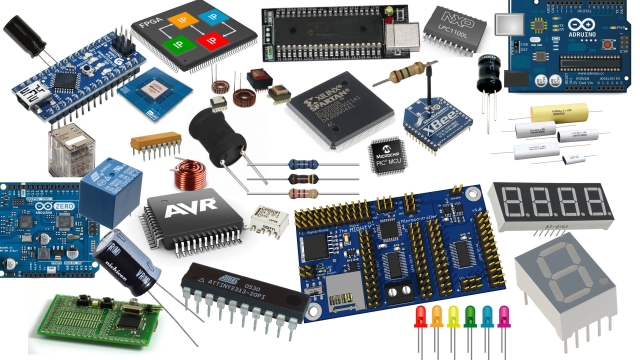Graphic design and software development may seem like distinct disciplines, but in reality, they possess a symbiotic relationship that goes beyond aesthetics. The harmonious interaction between these two fields has become increasingly essential in today’s digital landscape. While graphic design focuses on creating visually appealing and engaging experiences, software development provides the necessary functionality to bring these designs to life.
Graphic design serves as a guiding force in the creation of visually captivating elements, such as logos, websites, and user interfaces. It encompasses a myriad of principles, ranging from color theory and typography to layout and composition. Through their expert use of these elements, graphic designers can effectively communicate messages, evoke emotions, and ultimately shape user experiences.
On the other hand, software development is concerned with the technical implementation of these designs. It involves writing code, developing algorithms, and building frameworks that facilitate the execution of a project. Without the expertise of software developers, even the most aesthetically pleasing graphics would remain static and unresponsive.
The relationship between graphic design and software development is a true symbiosis, as each field relies on the other to fully realize its potential. While graphic design gives software a visual identity and guides user interactions, software development breathes life into these designs, adding interactivity and functionality. Together, they form a powerful duo that can create immersive digital experiences.
In this article, we will explore the intertwined nature of graphic design and software development. We will delve into how they collaborate throughout the design and development process, as well as explore some best practices and guidelines for both disciplines. By gaining a deeper understanding of this symbiotic relationship, designers and developers can work harmoniously and effectively to create compelling digital products that seamlessly blend form and function. Whether you’re a graphic designer or a software developer, this article will serve as a valuable guide to enhance your skills and collaboration in this interconnected world.
The Role of Graphic Design in Software Development
Graphic design plays a vital role in the world of software development. It goes beyond aesthetics, as it is responsible for the visual communication and user experience of software applications. Through thoughtful design principles and innovative techniques, graphic designers enhance the overall usability and appeal of software products.
One of the main contributions of graphic design in software development is creating intuitive user interfaces. By applying their expertise in layout, typography, and color theory, designers ensure that the visual elements of the software are presented in a way that is clear and easy for users to navigate and understand. This not only improves the overall user experience but also contributes to the effectiveness and efficiency of the software itself.
Moreover, graphic designers also play a crucial role in establishing brand identity within software applications. They incorporate brand elements such as logos, color schemes, and typography to reinforce a consistent visual identity across different platforms and devices. This helps in building user trust and recognition, making the software more memorable and distinguishable in a competitive market.
In addition, graphic design enables effective data visualization within software applications. Designers use their skills to present data in a visually appealing and understandable manner, through charts, graphs, and infographics. This helps users interpret complex information quickly and make informed decisions, ultimately improving the value and usefulness of the software.
In conclusion, the symbiotic relationship between graphic design and software development is essential for creating exceptional software products. Graphic design enhances the usability, brand identity, and data visualization within software applications, contributing to a better overall user experience and ultimately driving the success of the software in the market.
The Role of Software Development in Graphic Design
Software development plays a crucial role in the field of graphic design, enabling designers to bring their creative visions to life and enhance their productivity. By harnessing the power of technology, graphic designers are able to expand their capabilities and explore new horizons. In this section, we will explore how software development empowers graphic designers and the symbiotic relationship these two disciplines share.
Enhancing Creativity and Versatility
By embracing software development tools, graphic designers are empowered to think beyond traditional boundaries and showcase their creativity in unique ways. Design software enables them to experiment with a wide range of techniques, effects, and styles, thus allowing for greater versatility in creating visually captivating graphics. Through the use of drawing and illustration tools, designers can bring their concepts to fruition, breathing life into their designs and making them visually appealing.
Expanding Efficiency and Productivity
Graphic designers often work under tight deadlines, requiring them to be efficient in their design processes. Software tools designed specifically for graphic design offer numerous features and functionalities that streamline workflows and boost productivity. With the ability to automate repetitive tasks, designers can allocate more time to focus on the creative aspects of their work. Additionally, collaboration features within design software enable seamless communication between designers, clients, and other stakeholders, resulting in smoother project management and increased efficiency.
Bridging the Gap Between Designers and Developers
In the past, there has been a divide between graphic designers and software developers due to the contrasting nature of their roles. However, the advent of software development in graphic design has bridged this gap, fostering a symbiotic relationship between the two disciplines. Designers with coding knowledge can now create interactive and dynamic designs, blurring the line between design and development. This collaboration between designers and developers leads to more cohesive final products that seamlessly integrate aesthetics with functionality.
In conclusion, the integration of software development in graphic design has revolutionized the way designers work, unleashing their potential for creativity and efficiency. The relationship between these two disciplines continues to evolve, pushing the boundaries of design and technology, and opening up new possibilities for innovation. By embracing software development tools, graphic designers can continue to shape the visual landscape and create impactful designs that captivate audiences.
Best Practices for Fostering Collaboration
Effective collaboration between graphic designers and software developers is essential for creating successful projects. Here are some best practices to foster collaboration between these two disciplines.
Encourage open communication: Establishing clear and frequent lines of communication is fundamental to collaboration. Designers and developers should actively share their ideas, concerns, and progress throughout the project. Regular meetings and check-ins can help ensure that everyone is on the same page and can address any issues that arise promptly.
Houston Website DesignCreate a shared understanding: Both graphic designers and software developers should strive to create a shared understanding of the project’s goals and requirements. Designers should provide clear design specifications and guidelines, while developers should share technical constraints and possibilities. This collaborative effort will help align the team’s vision and expectations, resulting in a more cohesive final product.
Foster a culture of respect and empathy: Successful collaboration requires mutual respect and empathy. Acknowledge the unique expertise, skills, and perspectives that each team member brings to the table. Encourage an environment where everyone’s ideas are valued, and constructive feedback is given and received respectfully. This atmosphere of respect will promote a more collaborative and productive working relationship.
By following these best practices, graphic designers and software developers can work together harmoniously, leveraging each other’s strengths to create impactful and successful projects that seamlessly integrate design and development principles.


